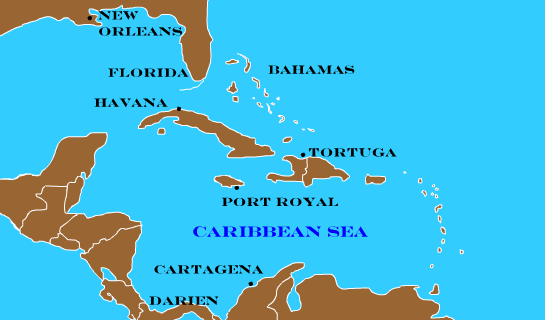French Possession in a Sea Spanish Rule
Tortuga, sometimes called Turtle Island, is a small island about 20 miles in length just north of Haiti. It was strategically located in the path of Spanish treasure ships returning to Spain. Although the small island was surrounded by Spanish colonies, the French first colonized it in 1625. Spanish forces proved unsuccessful in their repeated attempts to dislodge the French settlers from the island.
Brethren of the Coast
Tortuga soon became an island full of buccaneers, who referred to themselves as The Brethren of the Coast. When the French governor announced he would offer safe harbor for any non-Spanish ships and offered Letters of Marque to any buccaneers who would attack Spanish ships and split the booty, privateers from France, England, and other European nations came to Tortuga . A Letter of Marques was essentially a pirate license.
Thriving Pirate-infested Island
Before long, English privateers attempted to set up a colony on Tortuga, though the Spanish were able to drive them away. Meanwhile, the remaining French and English buccaneers began cultivating sugarcane and tobacco. At this time, the island's pirate community was thriving and much of its economy was derived from the spoils brought to it by French pirates.
The Headquarters for Sir Henry Morgan
One of the most famous pirates in history, Sir Henry Morgan, set up his operations in Tortuga and together, with over 500 buccaneers from the island, and another 1,000 more from Jamaica, plundered and pillaged dozens of Spanish coastal settlements including Santa Marta, Rio de la Hacha, Puerto Bello and Panama.
No Longer a Safe Harbor for Pirates
Eventually, however, hostilities between the Spanish and French subsided and all Letters of Marque were revoked. From that point, most buccaneers who attacked ships were quickly captured and hanged. The government of France even hired former pirates to hunt down pirates still operating. Nevertheless, piracy would continue near Tortuga for years to come, though the Bahamas would next become the hot spot for Caribbean buccaneers.
Click on the Points of the Map to Learn About Each Pirate Location |

|